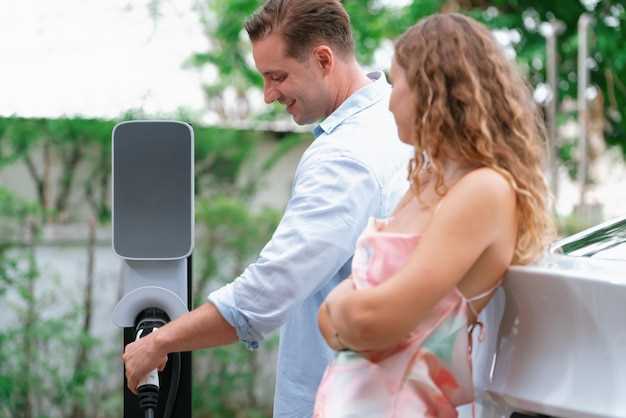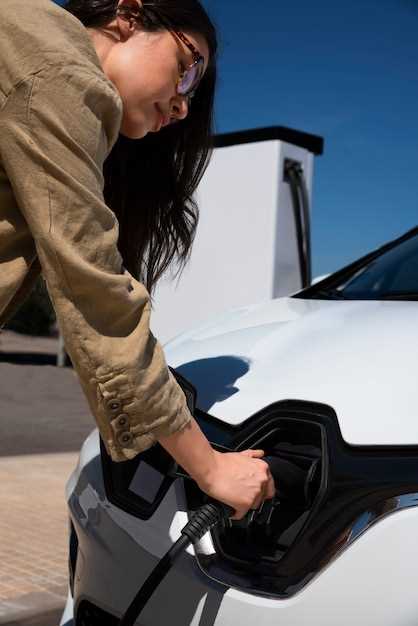
As the world shifts towards sustainable transportation, converting your gas car to an electric vehicle (EV) has become an increasingly popular option for eco-conscious drivers. This transition not only reduces your carbon footprint but also offers significant cost savings in fuel and maintenance over time. With advancements in technology, the process of converting a traditional gas-powered car into an efficient electric alternative is more accessible than ever.
In this practical guide, we will explore the essential steps involved in the conversion process, including selecting the right electric components, understanding the necessary modifications, and complying with local regulations. Whether you’re a seasoned DIY enthusiast or a novice looking to embark on your first automotive project, our comprehensive breakdown will equip you with the knowledge needed to successfully make the switch to an electric vehicle.
From the initial assessment of your existing vehicle to the final touches that bring your electric car to life, this guide will illuminate the path towards achieving a greener and more efficient mode of transportation. Embracing electric mobility is not just a trend; it’s a commitment to fostering a cleaner future for generations to come.
Evaluating the Compatibility of Your Vehicle for Electric Conversion

Before embarking on the journey of converting your gas car to electric, assessing the compatibility of your vehicle is crucial. Not all cars are suitable for an electric conversion, and understanding the key factors will help ensure a successful transition.
Firstly, consider the vehicle’s weight and size. Heavier vehicles may require more powerful electric motors and larger battery packs, which can complicate the conversion process. Compact cars or sedans generally provide a better foundation for electric conversion due to their lighter structure, improving efficiency and performance.
Secondly, evaluate the engine compartment space. An electric setup will replace the internal combustion engine, so sufficient room must be available for the electric motor and associated components. Verify whether the existing engine bay can accommodate the new system without extensive modifications.
Thirdly, the availability of spare parts is essential. Some vehicles have a vast aftermarket support system, making it easier to find necessary components for conversion. Research the community and resources related to your car model to ensure that you can source the electric conversion parts you may need.
Another critical aspect is the vehicle’s original condition. If the car has significant structural damage or rust, these issues might complicate the conversion. It’s advisable to start with a solid, well-maintained vehicle to avoid unexpected challenges during the conversion process.
Additionally, consider the vehicle’s electronics and wiring system. An electric conversion will require modifications to the electrical setup, so familiarity with or access to the vehicle’s wiring diagrams will be beneficial. An integrated system can make the conversion smoother and prevent issues later.
Finally, think about your driving habits and goals for the electric conversion. Assess the range you require, the type of terrain you typically navigate, and whether fast charging systems will be necessary. This evaluation will help you determine the battery size and type that best suits your needs.
By carefully evaluating these compatibility factors, you can ensure that your vehicle is a suitable candidate for an electric conversion, setting the stage for a successful transformation to a more sustainable and efficient mode of transport.
Selecting the Right Components for Your Electric Conversion Kit

When converting your gas car to electric, selecting the right components is crucial to ensure optimal performance and efficiency. The main components of an electric conversion kit include the electric motor, battery pack, controller, and charger. Each of these parts plays a vital role in the overall functionality of your electric vehicle.
The electric motor is the heart of any electric vehicle conversion. When choosing a motor, consider factors such as power output, torque, and compatibility with your car’s weight and intended usage. A brushless DC motor is often recommended for its efficiency and reliability. Make sure to check the voltage rating, as it should match your battery pack to maximize efficiency and performance.
Next, the battery pack is a critical component that determines your vehicle’s range and performance. Lithium-ion batteries are the preferred choice due to their high energy density and longevity. Consider the total capacity measured in kilowatt-hours (kWh) based on your desired range. Also, evaluate the battery management system to prevent overcharging and ensure safety during operation.
The controller regulates the power supplied to the motor, making it essential for maintaining performance and responsiveness. Look for a controller that offers programmable options, which allows you to customize settings based on your driving habits. Ensure that your controller is compatible with both the motor and the battery pack to guarantee seamless integration.
Finally, a reliable charger is necessary to maintain your battery’s health. Choose a charger that matches your battery pack’s voltage and chemistry. Features like fast charging capabilities and smart charging technology can significantly enhance your conversion experience and minimize downtime.
In summary, selecting the right components for your electric conversion kit involves careful consideration of the electric motor, battery pack, controller, and charger. Focus on compatibility, efficiency, and durability to achieve a successful conversion from gas to electric.
Step-by-Step Process for Installing Your Electric Drive System
The first step in converting your gas vehicle to an electric one is to gather all necessary tools and components. Ensure you have a reliable electric drive system, including the electric motor, batteries, controller, and any mounting hardware.
Next, you should prepare your vehicle for the conversion. This involves safely removing the existing gas engine, transmission, and fuel system. Take care to disconnect all wiring and fluids to avoid hazards during the removal process.
Once the gas engine is out, clean the engine bay to provide a solid base for your new electric components. Consider reinforcing the chassis if needed, as electric motors can be heavier than traditional engines.
Proceed by mounting the electric motor in the vehicle’s engine bay. Ensure that it is securely fastened and aligned properly for optimal performance. The positioning can significantly affect the vehicle’s weight distribution and handling.
After the motor is installed, it’s time to integrate the electric controller. This device manages the power from the batteries to the motor. Follow the manufacturer’s instructions for wiring, ensuring all connections are secure to prevent electrical issues.
Next, you will need to set up the battery system. Choose a suitable location in the vehicle for the battery pack, often in the trunk or under the floor. Secure the batteries in place and connect them to the electric controller. Make sure to follow safety guidelines for battery installation to prevent any risks.
Connect the necessary wiring from the controller to the electric motor and the battery pack. Keep all wires organized and insulated to avoid short circuits. This step is crucial for the performance and safety of your electric vehicle.
Once all components are connected, you should install a regenerative braking system if applicable. This feature enhances energy efficiency by converting kinetic energy back into stored energy during braking.
Finally, review all connections and components before attempting to power on your vehicle for the first time. Conduct a thorough inspection to ensure everything is installed correctly and safely. Once you’re confident, perform a test run to gauge the performance of your newly converted electric vehicle.





